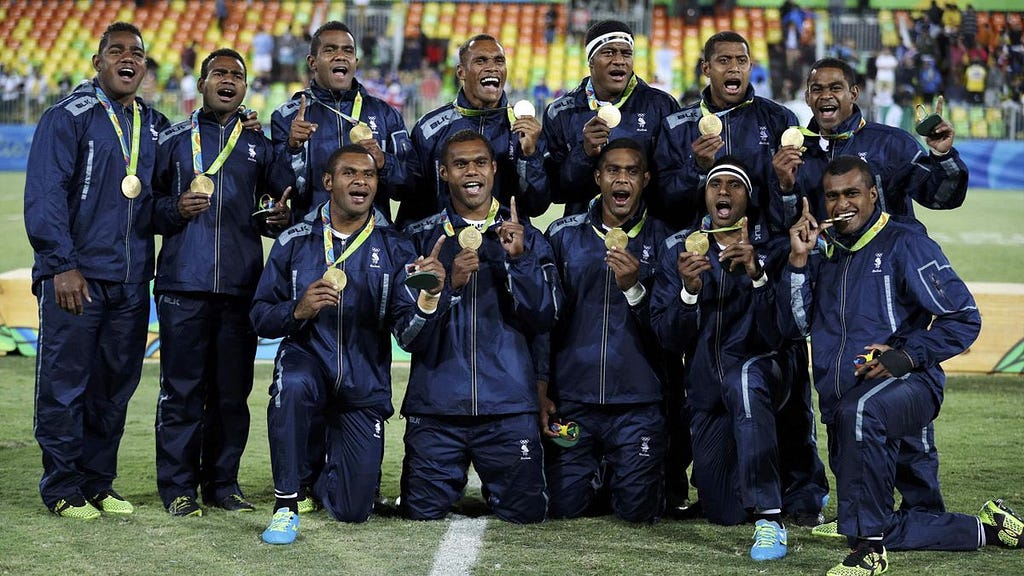
By William Stanton
You may know a couple people on campus who play rugby, but how much do you really know about the sport? Southern Virginia’s rugby team competes in the Rugby East Conference against teams such as the U.S. Naval Academy, Penn State, Virginia Tech, University of Virginia, and the University of South Carolina. Southern Virginia’s team plays two versions of rugby throughout the year: fifteens in the fall and sevens in the spring.

The easiest way to describe the difference between the two is comparing American football to 7 on 7 football. In the same way that football has skilled players and linemen, rugby fifteens has backs (skills) and forwards (linemen). Fifteens consist of 15 players per team: eight forwards and seven backs. To score, the ball must be touched down in the end zone. The ball can only be passed laterally or backwards. Only the ball carrier can get tackled, and once tackled, there is a ruck formed over the ball carrier, which is basically a fight for the ball. The game is continuous unless a foul has been committed or the ball has been taken out of bounds. If this occurs, the game will be restarted with either a scrum, a quick tap of the ball, or a line out, which is similar to a throw-in in soccer or basketball. The flow of fifteens is more similar to soccer in that there are two 40-minute halves and the clock does not stop unless there is a major injury that has occurred.
The other variation of rugby is sevens, which is currently in season. This past weekend, the team hosted the Rugby East Sevens tournament, where they finished fourth out of 12 teams. Sevens is the “7 on 7” of rugby, as only the skilled players tend to participate. The teams consist of seven players and games are much shorter, consisting of two seven-minute halves (tournaments range from three to six games in one day). The rules don’t change from fifteens to sevens and neither does the field size. Most people hear seven-minute halves and think, what’s so hard about that? Imagine sprinting for seven minutes; that in and of itself is hard enough. In addition, every five seconds or so, you have to tackle someone or get tackled, and then quickly get back to your feet and get right back into your sprint, and continue this cycle for a quarter of an hour… Kind of tough, right? This is what makes sevens so much more exciting and electric to watch for those who are not as familiar with the sport (this is also why the Olympics decided to adopt the sport in 2016).
In 2016, rugby sevens finally reached The Summer Olympic Games in Rio de Janeiro. For many viewers in America, this could have been their first time watching the world famous sport, and if so, they were able to watch the sevens equivalent to the 1990’s Chicago Bulls, Fiji, win the inaugural gold medal.

They would go on to defend their gold medal in the following Olympics in Tokyo, preventing every other country in the world from being able to say they’ve won an Olympic gold medal for sevens. Fortunately, unlike many of the other Olympic sports where you can only watch athletes compete every four years, the HSBC World Rugby Seven Series has, on average, 11 tournaments throughout each calendar year. The most recent leg of the tour took place in Vancouver, British Columbia with Argentina reigning superior over France and Australia finishing third.
Unfortunately, if you missed Southern Virginia’s sevens team compete, you won’t have another opportunity to watch them compete on home turf this sevens season. But, they still have a few tournaments to compete in to qualify for the national tournament held in Washington, D.C. Their next tournament will be March 11 at the University of Maryland. Each tournament will be broadcasted on YouTube on the Knights Broadcasting page… I highly recommend you give it a watch!
How Much Do You Know About Rugby? was originally published in The Herald on Medium, where people are continuing the conversation by highlighting and responding to this story.






